Media | Articles
7 Cars That Prove Horsepower Doesn’t Influence Classic Car Values as Much as You Think
This story first appeared in the September/October 2024 issue of Hagerty Drivers Club magazine. Join the club to receive our award-winning magazine and enjoy insider access to automotive events, discounts, roadside assistance, and more.
High horsepower and a low price are the stuff teen (and teen-at-heart) dreams are made of. Given inflation and massive gains in the collector car market, however, this dream can seem out of reach these days. A well-preserved Fox-body Mustang, for instance, can now easily cost more than $30,000.
But there are still classics out there that offer a lot of bang for the buck. To find the best deals, we dug through the entire Hagerty Price Guide, looking at horsepower ratings relative to values.
Before we get to our picks, it’s worth stating the actual big-picture takeaway: There is no correlation between horsepower and value. To be clear, we’re not saying horsepower doesn’t matter. It often matters quite a lot—ask anyone who has paid seven figures for a Hemi Mopar—but there are lots of other factors that play into what a car is worth (rarity, historical significance, racing pedigree), and they tend to mix unpredictably. Which is why a 2004 Pontiac GTO, with 350 horsepower, is worth barely half as much as a 1964 Pontiac GTO rated at 325 horsepower—and why both put together amount to less than 1 percent of the value of a 300-hp 1964 Ferrari 250 GTO.
Because of all these other factors, a purely mathematical analysis of which cars offer the most power per dollar turns out some, shall we say, unintuitive choices (V-6 Cadillac Cimarron, anyone?). However, when we apply enthusiast filters to our lengthy spreadsheets—at least 300 horsepower, two-doors only, $15K or less—the cream rises to the top. Here are our favorites:
Marketplace
Buy and sell classics with confidence
2005 Ford Mustang GT

Power: 300 HP
Average value*: $11,700
The first of the “retro” Mustangs has a lot going for it, including its styling, its polished driving dynamics, and a vibrant aftermarket. It also happens to be one of the most accessible ways into 300-plus horsepower.
1971 Pontiac LeMans

Power: 300-335 HP
Average value*: $13,300
The 1971 model year was the second-to-last for Pontiac’s mid-size LeMans line. Muscle car enthusiasts pay a lot more attention to the similar GTO, the lower-spec LeMans still packed plenty of punch with the right options. Engines for the 1971 LeMans included six-cylinders and lower-output V-8s, but coupe models were also available with a 400 cid/300hp V-8 or a 455 cid V-8 rated at either 325 hp or 335 hp.
1968 Oldsmobile Delta 88 Holiday Coupe

Power: 310 HP
Average value: $11,300
The 88 may not be as coveted as other names of full-size ’60s performance—Chevrolet’s Impala SS, Ford’s Galaxie—but the ’68 year in particular is one of the best deals for a handsome, powerful muscle car, with a 455-cubic-inch mill and 310 hp.
1998 Mercedes-Benz SL500 Roadster
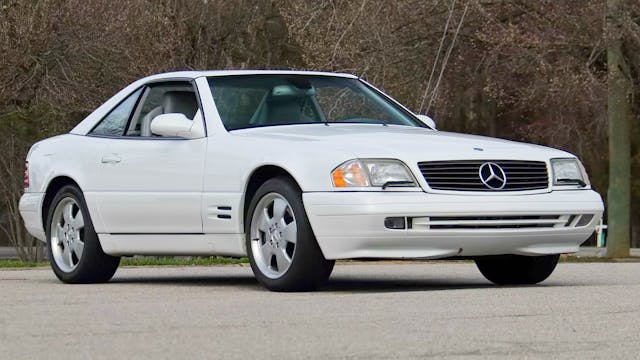
Power: 315 HP
Average Value*: $14,200
This luxurious, overengineered German roadster hails from the cost-is-no-object era of Mercedes-Benz product development. Elaborate and stout, this 315-hp, V-8–powered droptop is a ton of car for $14,100.
1968-69 Mercury Comet
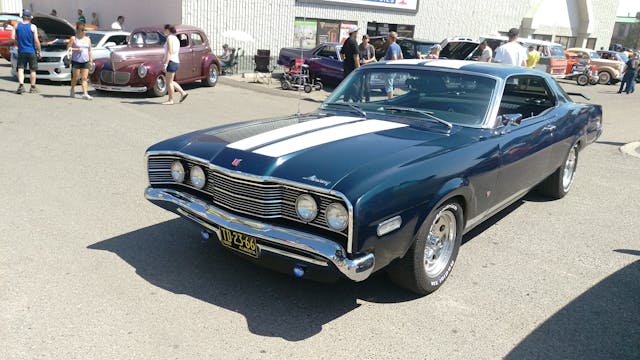
Power: 320-390 HP
Average value: $9500
The Comet lasted through five generations from 1960-77. By 1968 it was in its fourth iteration. The mid-size Mercury was only available as a two-door hardtop, and engines in the lower range started with a 200 cid/115hp six-cylinder. Lower output 302s and 351s were also available, but getting into the big horsepower group meant springing for the 390/320hp, 390/335hp, or 427/390hp.
1992-96 Chevrolet Corvette Coupe

Power: 300-330 HP
Average value*: $10,900
For the 1992 model year, America’s sports car ditched its old L98 (245 hp) for the new LT1 engine, which brought a great leap in grunt that put the Corvette back into the 300 hp club. An available LT4 engine for the C4 (1984-96) Corvette’s final model year came with 330 hp. C4s have always been one of the most affordable ways to get a V-8-powered, rear-drive two-seater, and they still are.
1965 Avanti II
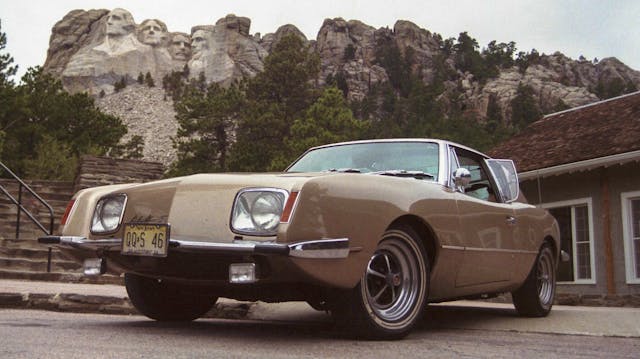
Power: 300 HP
Average Value*: $13,200
Designed by Studebaker and available in a wild array of colors, both inside and out, an Avanti II is one of the most distinctive cars you can find for less than $15K. The fact that it can be had with a 327-cubic-inch Chevrolet V-8 is a pleasant bonus.
*Hagerty Price Guide value, average #3 (“good”) condition



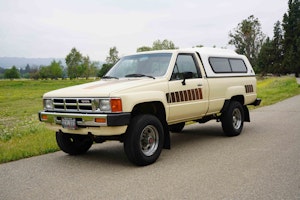

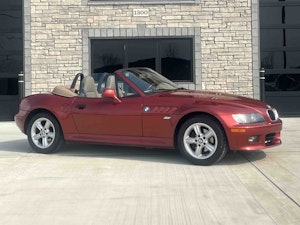
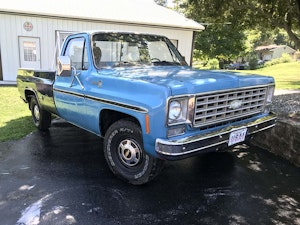












The truth here it is simply complicated like Jimmy Buffet would say.
It really depends. A 70 Chevelle SS with a 396 is a good value but a more powerful LS5 or 6 will add to the value.
Same on a 67 Corvette a L78 vs more powerful L88 make a big difference.
Part of it is power but you also have to consider the volume of the model sold.
You will often find higher HP engines associated to lower production models that are greater in demand due to the added power. .
It goes hand and hand with supply and demand.
The bargains are the cars that are less in demand and may have a bit less power but sold greater in volume.
There is just no blanket statement that power is not worth more or less money. Depends what it is in and how many built. The top models of engine performance almost always win no matter what they are in just due to volume and demand.
Right now C5 and C6 Corvettes are steals due to great power and performance and but great volumes built unless it is a ZR1 or Grand Sport. The added power, lower volume and greater demand make for higher prices.
It really is complicated; the cars with the highest hp engines were always more desirable, but the game changed in 1971. Insurance rates had sounded the death knell for cars known for their power like GTOs, Road Runners, etc. and also convertibles, because of the high number of claims from speed related accidents. Even if you could afford a GTO, you might not be able to afford the insurance. In 1971, the switch to unleaded gas and Net hp ratings gave the impression of less hp, but the actual power was still there. A clever buyer, with the help of a willing car salesman, could custom order a Le Mans line-by-line off of the dealer’s order form with the same options as a GTO, except for badging. The “GTO on sheep’s clothing” would slip past the insurance agent. A car like that would be really valuable nowadays, but documentation would be critical. After 1973, compression dropped, emission controls choked off what power was left, and cars became heavy and slow, weighed down by 10 mph bumpers and side impact door beams. Auto makers had to market cars for luxury (Corinthian Leather) and handling. Except for Corvettes, Trans Ams, and occasional special models, there were few collectible cars, and horsepower didn’t come back until the 80s. Of the newer cars, I think the C4 is the best driver of the Corvettes, regardless of power, and a 50th anniversary C5 makes my heart go pitter-pat.
I can get along just fine with “only” 345 hp.
Not quite sure what you consider a Lemans but my dad had Lemans’s from 72 through 75.
Pontiac produced the LeMans model from 1963 through 1993 if I’m not mistaken!
77 was the last year of the truly mid-sized A-Body Lemans. It was the cop car in Smokey and the Bandit.
That was the last year, not 1972.
Then you got the compact piece of junk Lemans of the 1980s.
Last year for one to be considered with the qualifications for this article.
True… in 1973 the EPA ruined all engines.
And the 1973 thru 1977 models were truly homely, unlike the earlier years’ models.
I always liked the looks of the ’76 Cutlass, and its 350 Rocket ran pretty decently!
Well said hyperv6
Ah, yes; the good old days, when things like 300 HP, AM radios, and ubiquitous sealed-beam headlights were adequate. I don’t think even the (desirable) 1st gen Mustang GT 289 had much HP beyond 200.
Off-topic: Makes me wonder about the lowest HP/highest cubic-inch engines offered from the Big 3, during the depths of the anemic Malaise era. Cadillac? Lincoln? Chrysler?
My father had a ‘77 Lincoln Continental Town Car. The joke in the name was that it had to be as long as the car 😜. I bought it from him in 1990 as my first old car. It was an interesting vehicle that I kept until 2008. I can’t say that I have missed it. Gas guzzler extraordinaire.
The Hi-Po 289 was rated at 271 HP as I recall, and a side note I had a ’65 Lemans with the 326 HO that was rated at 285 HP which was some 50 shy of the 4V GTO of that year.
I’m pretty sure GM had a ~7 L engine producing like 170 hp. Now I can’t recall which brand, car, or engine model it was, but as someone who always gets a chuckle out of Detroit’s unimpressive “specific output” (as we called it in engineering school) numbers and thus always makes a mental note of such things, I’m pretty sure 170 hp / 7 L is the record.
The Ford 460 would have be a strong contender for lowest HP/cubic inch during that era.
You have a good memory, Rider. Here’s another candidate: The Olds “Turnpike Cruiser” of 1968. My uncle was a salesman for Case Tractor Company, drove lots of miles in his Missouri and Illinois territory and had one of these. It was a 455 cu in engine with a 2 barrel carb. Ran on regular gas and he claimed he could get 22 mpg on the highway, which was really good for that era, especially for such a big car. I don’t recall the HP rating, but it was relatively low for that huge engine. I rode in that car once on a trip to my grandparents and it was real smooth and quiet. Just floated along!
Horsepower is the glamorous specification, but torque is the important one. It’s the one you feel every day, but horsepower matters more only when you’re at high RPMs, tearing around. “Horsepower sells cars, but torque wins races.” is a saying that has more than a grain of truth.
Buick GS455’s rule!
Tom M…You Are Sooooo CORRECT. A ‘1970 Buick ”Geritol” Skylark GS ‘455 …Was a REAL MOPAR ‘426…”HEMI-HUNTER”…BEWARE..!!
Hard to believe as it is, I get a good honest 16-18 consistently cruising in my 71 Riviera and often more if I’m cruising on a level ish road and just putting along at 50 -55 ish enjoying the Fall colors .
One particular trip going to a car show with the club we had a bunch of cars that 50-55 was the tippy top of there cruising speed so we all stayed in line and I got > 20mpg with a 455 4bbl in a 5000k pound car , that was amazing to me . You put your foot into the 4 bbls though , you can almost watch the gas gauge visibly drop !
I love the ” floaty ” comparison , when I drop the psi in my rear Monroe shocks , the low and floaty defiantly describes the ride, bring them up to 80-90 psi and you can load it down with folks or if alone I’m still able to attack some pretty twisty roads with pretty surprising authority. I Love those old school Monroe air shocks !
You do have to be a bit of a professor though while doing that and keep inertia in mind , throwing an almost 5000 pound car into a hard corner can get ,,well,, just a little bit hairy if you don’t keep physics in mind.
Don’t even ask me how I know this,,,,has anyone ever seen someone drifting in a 71 Rivi intentionally ? It can be done , ya just better have a 4 lane to do it on though, your going to need every inch of it LOL
289 hipo was 271 hp
“The 1971 model year was the second-to-last for Pontiac’s mid-size LeMans line.”
The A-Body Lemans was produced through 1977. And the A-Body was the midsized chassis.
Of course it became a cheap compact in the 1980s. But 1972 was NOT the last year of a mid-sized Lemans.
“Horsepower Doesn’t Influence Classic Car Values as Much as You Think”
I don’t care. “Value” isn’t always measured in dollars – and in my case, hardly at all. I “value” my classic for many reasons (including horsepower) and could give a flip what it would fetch in a sale. I happen to like horsepower (and torque) as long as they are in proportionate measure to the build and intent of the vehicle. I have a fair bit of both in my Pontiac, but for my purposes, much more would be a waste. If I was still into 1/4-mile drag racing, I’d probably want to add some more – but it would be for the “value” of reduced E.T.s and faster trap speed, not to make the car worth more on the market (although better E.T.s and more speed might indeed result in someone willing to pay more)! But for a street car, lots of horsepower might actually be more trouble than it’s worth.
I had a 1927 Marmon Speedster, a car brand most folks never heard of, that had a straight 8 cylinder engine. Being made in the ‘20’s, less than 100 hp, but oh my the torque! You could be going around the corner at 3-5 mph in 3rd gear and give it gas, and it would accelerate smoothly and powerfully. Wonderfully engineered cars.
“I happen to like horsepower (and torque) as long as they are in proportionate measure to the build and intent of the vehicle.”
I stand & applaud this viewpoint. Unless a car is a dd – where reliability, functionality, and cost/mile figure its suitability – fun or pleasure or toy or collectible or whatever you want to call them cars are evaluated by me as a package of variables that can be objectively measured and aesthetic ones that cannot.
I wrecked my 66 restomod GTO because I didn’t respect the power in it! Had it restored though – I learned my lesson!
Will the Avanti grow in price exponentially because some of the 70s Mustangs grew in price?
Early Avanti II’s in good condition are worth much more than $13k – $15k. You could get a “decent daily driver” for that price, but if you’re looking for a real head turner you’ll spend, at the very least, $20k.
Beauty is in the eye of the beholder of course, but the dumbstruck facial features of the AVANTI always stopped me cold . . truly “A face that only its mother could love”. How could any automotive design team stare upon such a cartoonish image on a drawing board and then dare to take it any further? Small wonder the maker of this cosmetic misfit went under soon after unleashing this monstrosity upon us . . .
So true, Robert!
I think the reason people bought those was because they were so ugly.
Kind of like the Cyber Truck buyer of today.
Why is 1998 SL500 so cheap? Because it is heavy?
Don’t let that entry price deceive anyone. “Cheap”, regarding a common, older MB, is a vaporous, casual evaluation, to lure the naïve and uninitiated, it would seem. The wealthy consume luxury vehicles like Chiclets, since the inconsequential detrimental impact on their discretionary resources, enable a flippant write off a (what to the rest of us would be significant) financial loss, and merely ‘move on’ to acquire the next novel replacement without hardly a second thought.
Built like a Panzer heavy, ‘yes’, without a doubt, but keep in mind, it’s engineered to comfortably exploit the addictive adrenalin rush of the Autobahn all day like it’s on rails, but realistically, ‘no’, any average10-, 20-, 30-year-old Benz is relatively ‘cheap’, not just due to inescapable depreciation, but because it takes an arm and a leg, and, if drivetrain-related, your firstborn son, to replace those aging, highly-engineered components and systems, after the initial small investment.
You hit the metric bolt on the head. Having encountered too many German cars that became next to worthless when the warranty expired I’d question the sanity in buying one.
Check u-tube channel “I do cars” for further frights.
Full disclosure: reluctantly, I unfortunately am speaking from my sobering experience, momentarily allowing my typically-reliable cognitive reason to lapse, and thoughtlessly took the seductive bait at an extremely low entry fee, and actually for a vehicle I really didn’t need to possess.
Roughly a year later, that very modest sum has unexpectedly tripled, but still significantly less than half the price of a new Camry or Accord, so my experience of ‘buyer’s remorse’ has been mitigated somewhat.
Regardless, I’ve learned my lesson, and promise not to repeat that mistake (fooled me once, shame on me).
That being revealed, that one vehicle, like no other I have owned, admittedly remains an incredibly luxurious vehicle, that, even in gridlock, has fundamentally changed me for the better, brining a serene, confident calmness to my previously unrefined, anxious driving experience, which is a priceless benefit. Maybe that’s the best perspective, rather than dwelling on woeful regret.
I was expecting to see that Larry Webster had posted this. 😹
“Hey, Siri- compose something with an average 7syllables per word.”
Not all of us still use crayons to create our missives.
Uh, What?
Confucius say” Man born with silver spoon in mouth make stirring speeches “.
Absolutely profound.
Make it simple bro….
Performance art?
I get 20-plus adjectives/adverbs.
Nothing truer than the old “there is no such thing as a cheap German car” – Or Italian either for that matter. (currently working on a friends Lambo Espada -with his BMW next in line)
Same is true with a BMW. I bought a used 99 M3 convertible. I knew I couldn’t afford a new one. I learned quickly that I couldn’t afford a used one. 3 expensive motors operated that top. Replaced all. Weird expensive machines. I do not recommend.
A friend (who is not a car guy) bragged he got a great deal on a well-used X5 from an online auction. I really held back as not to hurt his feelings. That was years ago, and it is still sitting in the same parking spot, waiting on repairs that he can’t afford.
I’ve owned a 2008 S550 for 2 years and haven’t refinanced my house to pay for repairs as of yet fingers crossed . When the car came out with a market price of $130k and I bought it for 10k with 390 hp it’s a real sleeper with more power than brakes you definitely have to give your self sometime to slow down before the red lights.
As a long-term S-Class owner (2010 S600 currently); we’ve found them to be excellent used bargains. Our current S600 had 39,000 miles on it, was perpetually maintained at the local dealer, cost $180,000+ new, and we paid $27,000 on ebay from a physician’s wife. It now has 90,000 miles on it, gets 21 mpg, and has never had an issue. Fabulous car; better than our previous 750i, A8, Bentley Turbo, Jag XJ. The key is low miles, good maintenance history, and a no-hit Carfax. I always contact the dealer, run a history record check, and have driven crazy expensive cars for less than my wife’s new Outback Turbo. BTW, the others mentioned were also great cars, bought similarly, but the S600 is so much more car.
Extremely well put …. Articulate break down with a heavy dose of socio-political reality.
I would to see your take on cheap Ferraris……
Well done sir, well done
Having owned a bunch of old German cars as my daily drivers (I have one now), one redeeming factor is that the current models not only are less desirable and don’t drive as well (to me at least), they’ve become so expensive that even the regular four and sometimes five figure repair bills on my ancient relics amortize to quote a bit less than the monthly lease on a new one.
At least that’s what I keep telling myself.
Having owned two older SLs, which I loved, I’ve come to this motto: I can afford to buy it, but I can’t afford to own it.
Not always, and this post will probably bring on a host of mechanical issues. I had a flight of reverie in 2015 and bought a really low milage (25,000) Mercedes CL 600. Sticker price new
$136,000. I paid $29,000. The obvious danger was all the outrageously expensive systems that make this road rocket what it is. Knock wood, aside from normal maintenance and a few
pricy repairs, we have had a wonderful life together and I still feel like a kid on Christmas morning whenever I get into the car. It’s been my daily driver for the last 9 years.
I feel the same about the Porsche 928 S4 I bought for $12,500 Cdn in 2007. It had 88,000 miles on it at the time and, yes, there’s been some maintenance bills but not as bad as a lot of people like to make out. And, yes, I still feel like a kid on Christmas morning every time I drive it as well (1,000 to 2,000 kms/summer). It’s a hoot to drive.
I’m now 72, so far among the 50 or so automobiles I’ve owned in my life, new and used, I’ve owned the following used cars that varied from 45K to 150K miles when I bought them. Most of them were probably around 100K miles at purchase. I’m pretty knowledgeable and I only bought cars that I was convinced had been well maintained and were in good condition, or only needed relatively minor repairs at the time I bought them. I can and do most of the repairs on my own vehicles, however, I’ve never had to replace an engine or transmission on any of these vehicles. I have replaced steering and suspension parts, light bulbs, antenna masts, the occasional heater fan, windshield wiper and window regulator motor. Even if I had to pay an independent mechanic for repairs none of these Items would have been catastrophic (Unless you took the car to the dealership, in which case all bets are off.)
1972 Mercedes 280 SE 4.5
1976 Mercedes 300D
1980 Mercedes 300D
1985 BMW 535i 5-speed
1985 Porsche 944 5-speed
1979 Mercedes 280 SL, European model
1985 BMW 635i 5 speed
1994 BMW 740iL
1994 BMW 540i
1996 BMW M3 convertible
And my current ride
1999 Mercedes SL500
I can honestly say that every one of the automobiles above was built rock solid, and was dependable and a joy to own and drive.
I also owned a 1979 Audi 5000, and a 1980 280ZX. I cannot say the same for those cars. They were generally a pain in the ass and constantly in need of something.
I would also point out that all of the Mercedes, BMWs, and Porsches I owned were from the ’70s, ’80s and early to mid-90s. (The exception being the 1999 SL500) I would be much less confident of the quality and reliability of most of these cars built from the late ’90s and on and would hesitate to recommend buying one unless you’re really capable of doing most of your own work, or actually do have a lot of disposable income to pay for repairs.
Some desirable Mercedes models are relatively cheap because they are expensive to maintain or bring up to daily driver reliability, especially if they have the usual high mileage. I have a 302 HP Mercedes W211 E500, which is an impressive machine, but doesn’t have much value at all. You can buy a nice one for under $10K. The more desirable E55, with another 85 HP and two more gears in the transmission is only a couple of thousand dollars more, but it will likely be a high mileage example.
One thing to think about is that these cars had the air suspension, and quality shocks, and air springs can easily burn up over $1200 in parts, and high labor costs to install.
AMG cars don’t necessarily have higher value, as they have been enjoyed, and likely have more than 150K miles. Sometimes, you can find an E55 AMG with relatively low miles (under 100,000 miles) for a bargain price.
Since vehicles are generally considered depreciating asset, they will always tend to be an overall poor investment.
I suppose, as it is with a wide variety of discretionary expenditures available, such as a memorable vacation trip, for instance, there’s hopefully a tolerable balance we can achieve, between the tangible, regretful, short-term financial impact, vs. the intangible, but enjoyable experiences that endure in fond retrospect.
Because they are EXTREAMLY EXPENSIVE to repair and they will need repair, 100% guaranteed .Stay away , far away.German engineering – how can we make this very simple device as difficult and expensive to repair as possible and make it last only as long as warranty covers the repair .Fact .
I have a 2008 E320 bluetec and while I love the ride sometimes the German penny pinching ticks me off…a bulb for the left rear back up light went out…found out they are soldered in meaning you have to buy the whole tail light assembly vs a single bulb replacement…so much for the “engineered like no other”
No because it’s UNRELIABLE, and you’ll pay more than the purchase price on maintenance and repairs!
Old Benzes can be expensive to maintain if you buy the wrong one or one which has been abused, but looks good online.
However, if you are picky and shop around, you can find one which is exemplary in every aspect.
I have never had to sink tons of money into any of our Benzes (used as daily drivers). A couple were not the best buys for our son, so I sold them, and he now has a great one… a 2007 C280 4Matic. Had 2 diesels, both of which were totaled (no one was injured, thank goodness, and speaks to their solid build). Had a first year SLK230 kompressor which was a Summer-only car and sold it because we rarely drove it. Have a ’13 C300 4Matic Sport which is a great car (got 32mpg on a 4800 mile road trip out West with average speeds on the road being about 80mph) at 130k miles. Regular maint. at a shop (not a $$$ dealer) will keep costs low. Also, I do a lot of my own work (oil changes and tuneups, with parts from FCP Euro… check them out).
I know folks with American cars (and some with Toyotas, Nissans, and Subarus), and they pay more for maint work and parts, and the cars don’t last or cost a lot more to repair as they wait too long and use the dealer.
The old SLs are a bargain and are usually very solid, if well maintained and not abused.
The 1964 Avanti is a well deserved car that has a lot of historical significance the one I have has the 289 engine that is supercharged called the r2 it broke speed records on the salt flats in 63 they are way above 11000 and mine only has 36000 miles on it
Had Bessie, a red ’67 Delta 88 Holiday Coupe, back in grad school. Bessie put all cars I have owned to shame. The 425 cu inch mill towed a huge trailer with all my belongings from Chicago to LA passing lesser cars on uphill climbs with ease. Bessie’s 4 wheel drums brought us safely down crooked Lombard St in San Francisco. The roofing shingles sealing the floor against weather kept me warm and dry through torrential rainstorms. All till the fiber camshaft gear self-destructed one day. I arranged for her towed away to the great automotive archive in the sky. Sayonara Bessie.
Were they finned drums like in the Buick Riviera?
Some of the above options with a good power-to-weight ratio would be fun to drive, but some are lead-sleds, so it would take every bit of that 300 HP and resulting torque to move. Less horse power and less weight will result in the same exhilaration.
As a barely 300 hp Mustang alternative, one car I regret selling was a 2012 Mustang V6, 6 speed, with the “Performance Pack” (GT springs, shocks, brakes, wheels, etc). 305 HP and slightly less weight that the 5 liter. Not sexy, but it was reasonably quick and handled nicely. It was hard to find one with manual, and likely harder today, but worth a look.
I have heard this since 1967 about SBC engines, But some say the 1996 LT-4 may have been underrated at 330 hp. Kind of like the 1995 LT-5 Dunn heads being better than those from the original vendor, Bermal. The true answer in unknown and unknowable, but the myth persists.
All those 1960’s cars with 300+ HP are SAE Gross whereas the manufacturers changed to SAE Net HP around 1971-72. This typically reduced advertised HP by around 30%, and sometimes even more. For example, the 1971 Cadillac Eldorado had a net horsepower of 235, compared to the 400 gross horsepower of the 1970 model.
Exactly so!
Still a net VS gross horsepower confusing article. 300 gross horsepower before the big change in 1972 was not still 300 horsepower. When horsepower ratings switched from gross to net in 1972, most cars saw a loss of over 100 horsepower on their ratings, meaning the advertised horsepower significantly decreased due to the more accurate net measurement method being used; this was particularly noticeable on muscle cars. Some say it lost even more than that. I have heard arguments that engines were detuned at this time. Most weren’t. They were exact carryovers from the previous year. Get it right Hagerty.
Exactly. I was surprised to see this rookie mistake in a Hagerty piece…
A 71 and 72 engine should be identical except for the HP rating method, probably a 73 as well. As you get further into the 70s tuning for emissions become more of a factor.
Correct on net v gross but most WERE detuned to allow them to run on unleaded gas.
The addition of pollution control stuff right around then had a strong negative impact on driveability. I drove a 73 Maverick after having driven the same owner’s earlier one, and it was a slug by comparison. Both were sixes. Same general comparison of a 73 Ford Country Squire with its predecessor, a 70 model. Both 351s, but the 73 felt gutless. So while basic engines carried over for years, the net horsepower vs. gross horsepower ratings weren’t the only changes.